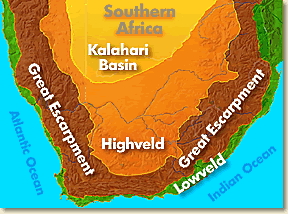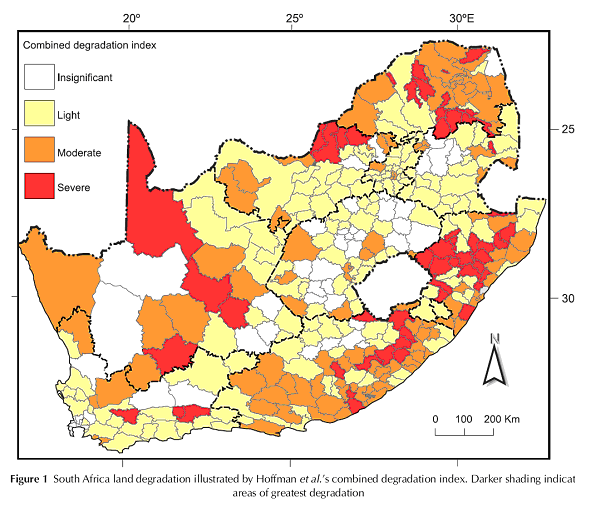The soils and land surrounding the Cape Town and Stellenbosch regions of South Africa are unique as a global soil region, but also as a local soil region. Researchers in South Africa are continually looking for ways of increasing sustainability in these regions due to their importance to South Africa as a whole.
South Africa falls within that region of world soil that is sandwiched between mid-latitude tropics and the high latitudes. The soil patterns in South Africa are relatively akin to those of Australia and also those bordering the Mediterranean Sea (think of France when observing wine production). (6)
There are three general factors that contribute to a land's ability to produce crops. The amount of annual rainfall, the quality of soil parent materials, and the depth of the soil. Developed countries of the northern high latitudes contain plains with deep, rich soils. This is not the case with South Africa. Large parts of the country contain sandy soils, which are practically worthless for establishing crops. The rest of South Africa, which is covered by predominantly shallow soil, is less than ideal as well. The shallowness of the soil is caused by the very rocky, very hard parent materials that make up the majority of the country, as well as the "inefficient rainfall" of the region. (7)
Land that is capable of sustaining crop production is referred to as arable land. 13% of South Africa is considered arable land. This is remarkable considering that 35% of South Africa receives enough rainfall for dryland crop production. The soils in this 35% of South Africa only allow for 13% of the land to sustain crop production. (M.C. Laker)
Another important fact to consider in the observation of a country's crop production is the internationally accepted norm that it takes .4 ha (1 hectare = 10,000 m2) worth of arable land to produce enough food to feed one person. As a matter of comparison, the U.S. contains over 300 million ha of arable land, which makes it capable of providing food for around 800 million people. With a population of only 350 million, there is a clear excess of food and the ability to create an agriculture industry. South Africa on the other hand contains only 14 million ha of arable land, capable of providing food for 35 million people. Since South Africa has a population of approx. 47 million people it is dependent on other countries for a substantial portion of its food supply. (9)
South Africa has focused its agricultural exports not on widely available crops, such as corn or wheat, in which it could offer little competition in the global market, but rather, South Africa has focused its agricultural exports on specialty foods that are made rare by their inability to grow in the majority of world climates. The South African wine industry is the clearest example. (2)
The ability of South Africa to sustain what little quality soil it possesses is hindered by a variety of factors. Briefly mentioned here is the fact that the U-shaped escarpment that surrounds much of South Africa prohibits the wide dispersal of water, through rainfall, over much of the higher veld areas. The salinity of many costal low lying soils is not diffused by overland runoff because these escarpments have created well carved paths for coastal precipitation. (7)


There are major issues arising from the sporadic rainfall of the South African region. As NASA's Earth Observatory reports:
"Most of South Africa's wheat is produced in the Western Cape, with the areas in the southwest corner of the province being among the most important wheat-producing regions in South Africa. Erratic rainfall in the Western Cape often produces wide variations in wheat yields and quality, with the country having a surplus of wheat only during very good rainfall years and shortages during the majority of years. Low rainfall and soil moisture conditions in the Western Cape will reduce this year's wheat and barley crops."
This analysis can be imported and applied to the rest of Western Cape crops and is illustrated in the following images from the Earth Observatory.
|
Without the vegetation destroyed by a drought or year of particularly poor rainfall, the soils of the Western Cape are deprived of the nutrients recycled from the unused crop biomaterials and are therefore less equipt to sustain sufficient crop yields the following year. This positive feedback loop is one that can be devastating to African countries, often times culminating in a severe famine after several decades of slowly deteriorating soil quality. |


